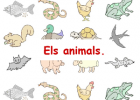Cargando...
Recursos educativos
-
Nivel educativo
-
Competencias
-
Tipología
-
Idioma
-
Tipo de medio
-
Tipo de actividad
-
Destinatarios
-
Tipo de audiencia
-
Creador
Lo más buscado
- Plantillas de letras para niños
- Imprimir material tercero
- actividades matemáticas secundaria
- Actividades de repaso en séptimo
- Uso de b y v
- Mapa conceptual del sistema endocrino
- Aprender a leer
- Ángulos interiores y exteriores
- La Catedral de Santiago
- Siglos XV-XVII
- Aprender a reciclar
- Países de América
- Juegos de tablas de multiplicar tercero
- Herramientas para física
- Experimentos de ecología
-

-

The driving factors behind imperialism
EduBook Organización
- 3215 visitas
1.1. Europe's dominance In the last few decades of the 19th century, the Second Industrial Revolution transformed the economies of the leading European powers. Great Britain, France, Belgium and…
-

End-of-unit activities - The age of imperialism
EduBook Organización
- 3220 visitas
By the year 1870, the industrialised nations had entered a period of economic prosperity and demographic growth due to advances made during the Second Industrial Revolution. The major European powers,…
-

Choose. The USSR
EduBook Organización
- 3211 visitas
Choose the correct answer: What did the Soviet Union become following the Second World War? What was the economic objective of the Soviet Union? What social groups existed in the Soviet Union? Who made…
-

Classify. A bipolar world (1)
EduBook Organización
- 3211 visitas
Complete the following table about the division of the world into two opposing blocs: Truman Doctrine Definition: Bloc: Marshall Plan Definition: Bloc: Zhdanov Doctrine Definition: Bloc: Cominform…
-

-

Els animals
Eva Ribes Organización
- 3201 visitas
Pàgina web de ZonaClic que conté un paquet d'activitats interactives per a treballar el tema dels animals. Els animals els podem classificar de moltes formes: domèstics, salvatges, mamífers,…
-

Sketchbook Express | La nube artística
José María Reyes Docente
- 9 lo usan
- 1439 visitas
-

Operaciones con polinomios. Actividad 6
EduBook Organización
- 3197 visitas
Dados los polinomios siguientes: P(x) = x3 + 2x2 – 4x + 2 Q(x) = –3x3 + 8x2 + x + 3 R(x) = 4x2 + 4x – 2 Calcula: P(x) · Q(x) = Q(x) · R(x) =
-

Indica. Elementos de una ecuación
EduBook Organización
- 3195 visitas
Indica el primero y el segundo miembros de la ecuación 4x + 2 = 5x + 4. ¿Cuál es su grado? Primer miembro de la ecuación: Segundo miembro de la ecuación: El grado de la ecuación es:
Te estamos redirigiendo a la ficha del libro...













